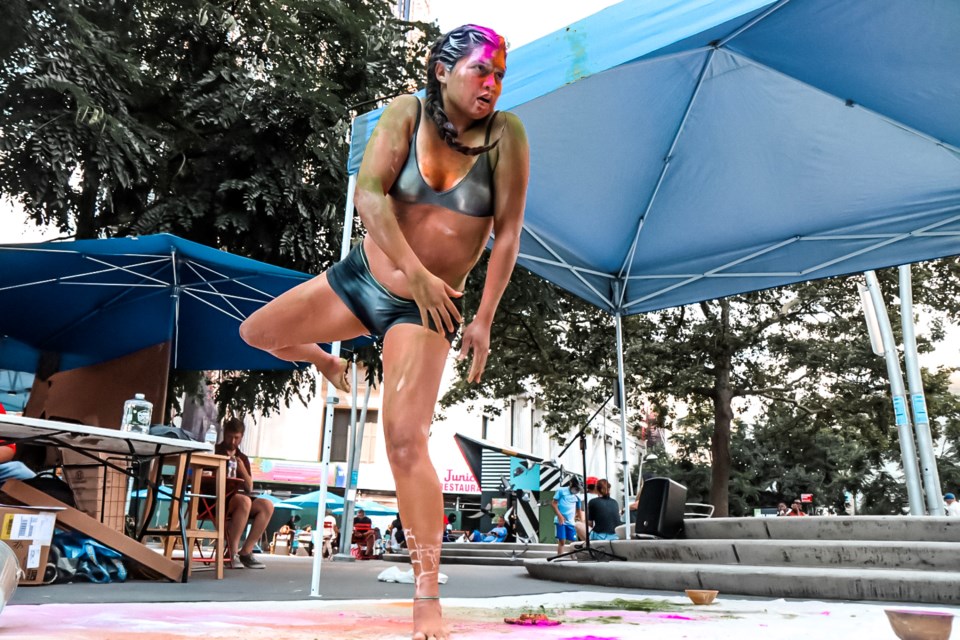Brooklyn's artists and art organizations are working hard to survive.
New York City-based arts organizations have lost nearly $1 billion in income since the pandemic hit, according to a new report by nonpartisan policy organization Center for an Urban Future.
The report discovered that among the 643 arts organizations surveyed (including over 120 in Brooklyn) the most severe toll was on smaller organizations, organizations based in lower-income areas and organizations which identify as BIPOC-led.
BIPOC-led organizations were more likely to report a severe financial impact from the pandemic, less likely to be confident in their long-term survival, and twice as likely to report that their entire staff was still laid off or furloughed.
25% of organizations in lower-income ZIP codes reported losing access to their sole physical space during the pandemic, double the rate of organizations located in wealthier neighborhoods.
The report, which surveyed organizations from all five boroughs, concluded that at least $170 million in relief funding and major technical support will be needed to ensure a full and equitable recovery from the pandemic.
Eli Dvorkin, CUF's Editorial & Policy Director, said that despite losses, NYC's arts organizations showed promising signs of resiliency.
"About two thirds of surveyed organizations started delivering virtual programming," Dvorkin said. "Half of organizations created or strengthened an existing diversity, equity, and inclusion plan in response, not only to the ongoing pandemic, but also the movement for racial justice that erupted last summer."
Only 3% of arts organizations closed for good.
In addition to funding, the report recommends the next mayor launch resource centers and a helpline for arts organizations, sustain public funding for the arts, enlist every city agency to support the arts and pursue long-term affordability for artists and cultural organizations.
Kyoung's Pacific Beat, a peace-making theater company based in Flatbush, was able to weather the pandemic without laying off any staff by pivoting to virtual programming and building a network of mutual support. However, staying afloat has its challenges.
Artistic Director Kyoung H. Park said the main challenges his organization faced were that once theaters shut down, many company members were out of work and forced to leave town. Kyoung's Pacific Beat did its new show virtually by setting up green screens in members' homes and mailing supplies to each other.
Kyoung's Pacific Beat created a micro-grant for struggling artists with the Indie Theater Fund, facilitated virtual gatherings with BIPOC-led arts organizations and philanthropists for the Mosaic Network and Fund, and put on a mutual aid event with live performances.
"If anything, we thrived through [the pandemic] because all of a sudden funders realized we were too small and too poor to get any city, state or federal relief when the pandemic happened," Park said. "Our company got especially lucky because our lived experiences taught us how to make something out of nothing, and to raise money like hell for the collective good."
Groundswell, an NYC-based organization that brings together youth, artists, and community organizations to use art as a tool for social change, created an emergency fund for its artists in partnership with Brooklyn Community Foundation.
Robyne Walker Murphy, executive director of Groundswell said that her organization weathered the pandemic fairly well due to generous funders and the dedication of her team.
"As executive director, my biggest challenge was just the uncertainty," Walker Murphy said. "For staff, we did not have to furlough anyone or let anyone go. That was a priority for us -- to take care of our people. And in terms of our young people, we moved our programming to a remote setting."
In the past, the organization's flagship Summer Leadership Institute program, in which youth are paid to create public art in their neighborhoods, accepted 50 applicants. However, this past summer, Groundswell was only able to accept 30 applicants to ensure that all participants would be fairly paid.
"Because there was so much uncertainty about where the money was going to come from, we only took in 30 participants in order to pay our learners," Walker Murphy said.
Dvorkin said the report recommended the City take multiple measures to provide resources and safety nets for NYC's art organizations because they are essential to the fabric of the city.
"The arts employ directly almost 100,000 New Yorkers and indirectly closer to 300,000," Dvorkin said. "The arts here attract millions of visitors from around the globe. It gives us our identities as New Yorkers."
"We're going to need a strong and vibrant arts ecosystem for New York City to come back fully, " Dvorkin said.




